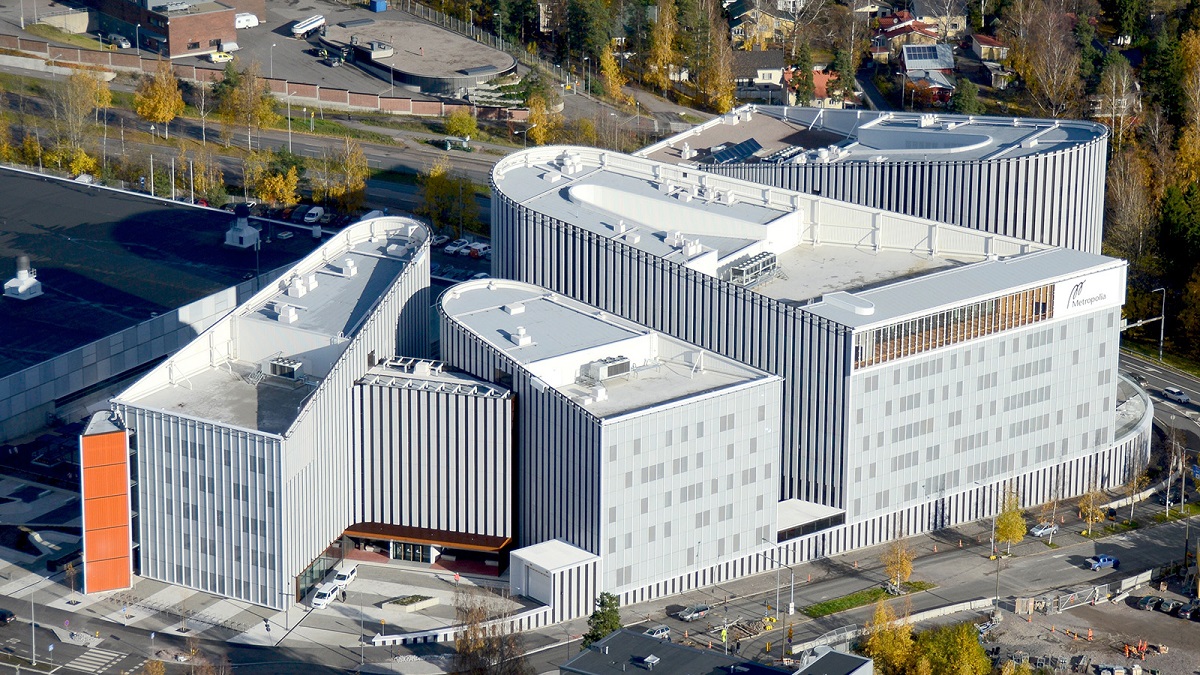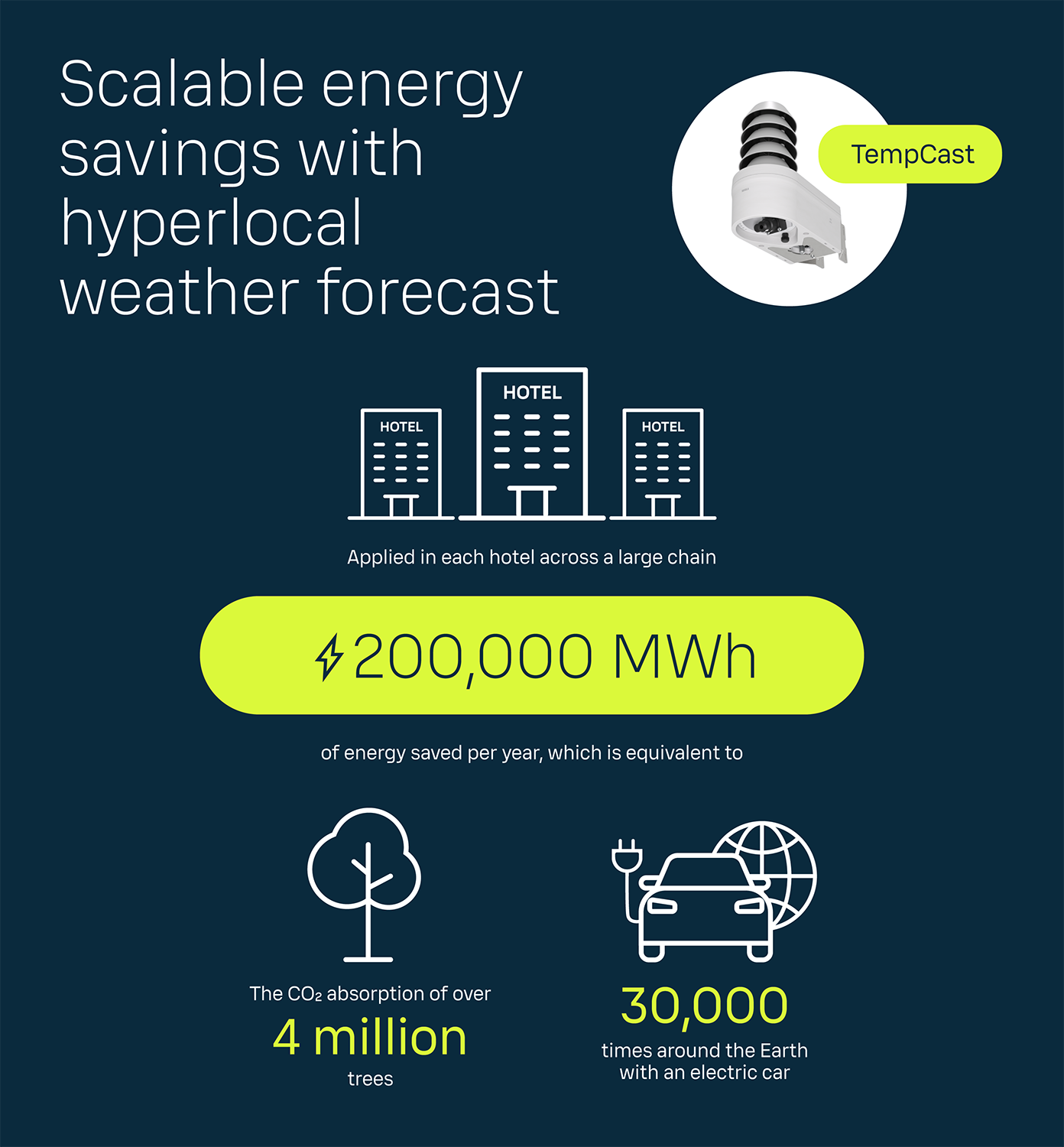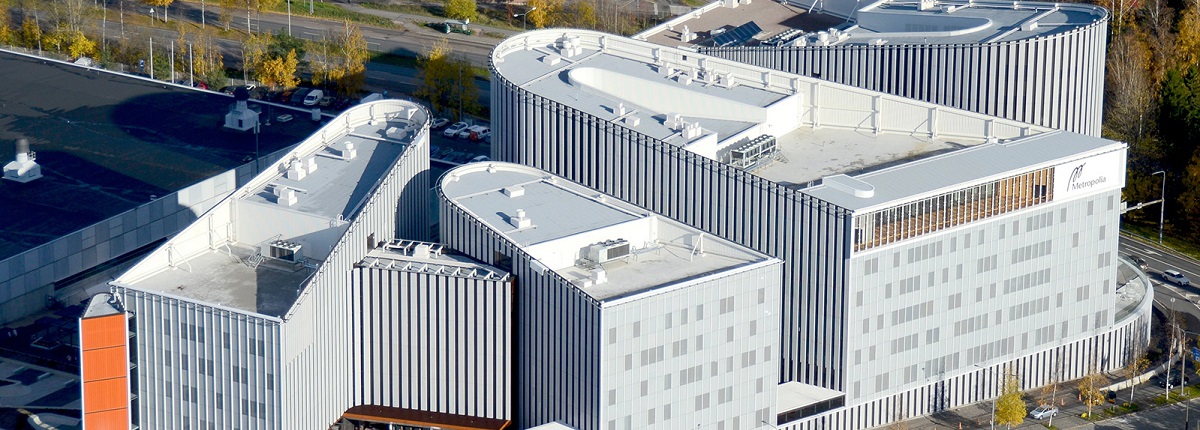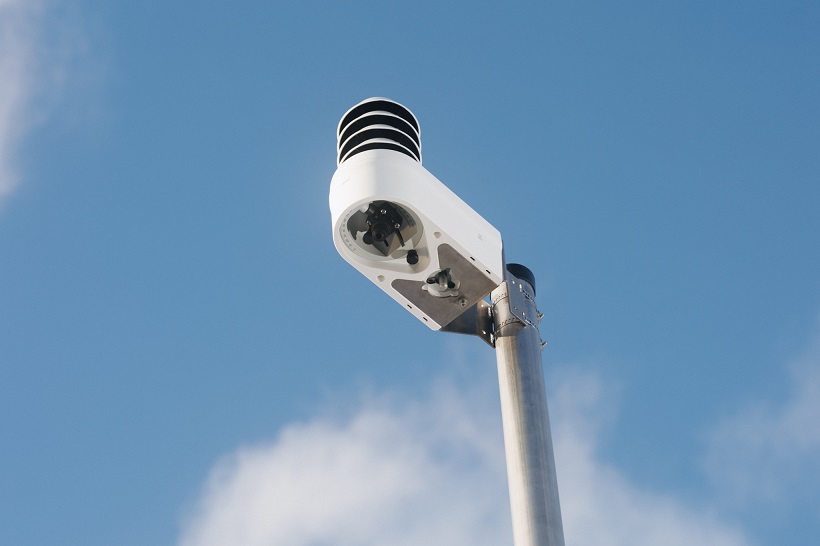Our weather sensor spent 8 months on the roof of the Metropolia campus building, collecting local weather data and patterns to help improve weather forecasts and optimize the building’s energy usage. Now, we have some promising results to share!
We installed the sensor in November and reported improved forecast results in March. The sensor's "training" period was completed in February, and that's when it started feeding improved data into the campus's building automation system.
Since mid-February, the local forecast data has been integrated into the district-heating-powered radiators in Building A, which has about 12,000 m² of multifunctional college space.

To better understand the impact of the hyperlocal weather data, our automation partner, Eeneman, modeled the building's energy consumption data based on the general weather forecast. Comparing Xcast-enhanced automation with the standard forecast-based model, the results are clear: Xcast brought savings of 2.8% (7.64 MWh) in the 2.5-month period since February 2024. Radiators account for approximately one-fourth of the building's heating consumption, so once the AC and floor heating are also integrated into the weather-smart automation system, savings will grow accordingly.

When deployed across multiple buildings—such as hotel chains and municipal premises—the solution is highly scalable and brings significant energy savings.
In September 2024, we will kick off Phase 2 of the project, extending the scope of smart-controlled heating systems to include floor heating and AC. This will provide a better understanding of the total savings on heating consumption.
Vaisala Xweather runs the project in cooperation with Eeneman Oy, Business Helsinki, Bravida, and Metropolia University of Applied Sciences. With this lineup, we can support data integration and automation from multiple frontiers, allowing for insightful and scalable findings. Harri Hahkala, Metropolia’s Head of Technology, regards the project with excitement and curiosity:
" ...in September, during the project's second phase, we will explore the full potential of this technology."
Harri Hahkala, Head of Technology - Metropolia UAS
“So far in this project, all stakeholders involved have done a great job testing, learning, and optimizing the data. But in September, during the project's second phase, we will explore the full potential of this technology. The results are already promising, and I look forward to finding new ways to apply the findings on a larger scale, helping organizations maximize their energy savings and understand weather's hyperlocal impact better,” says Hahkala.

